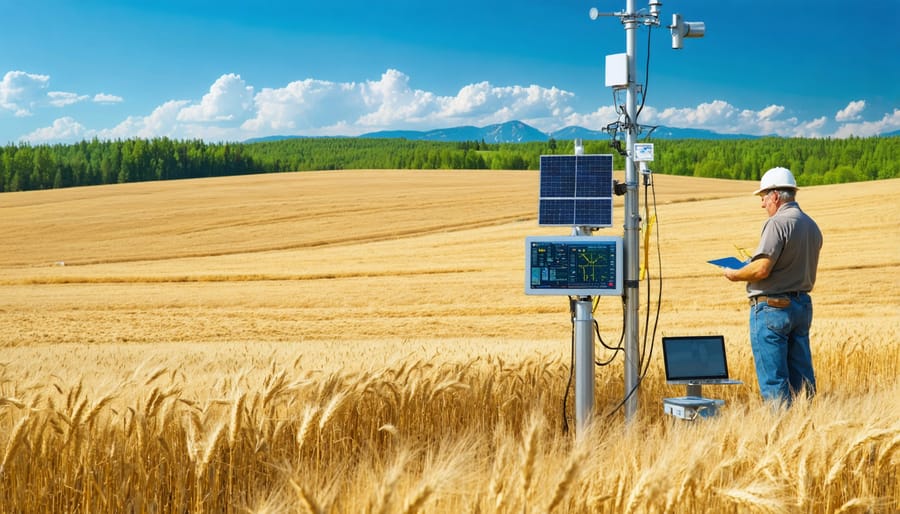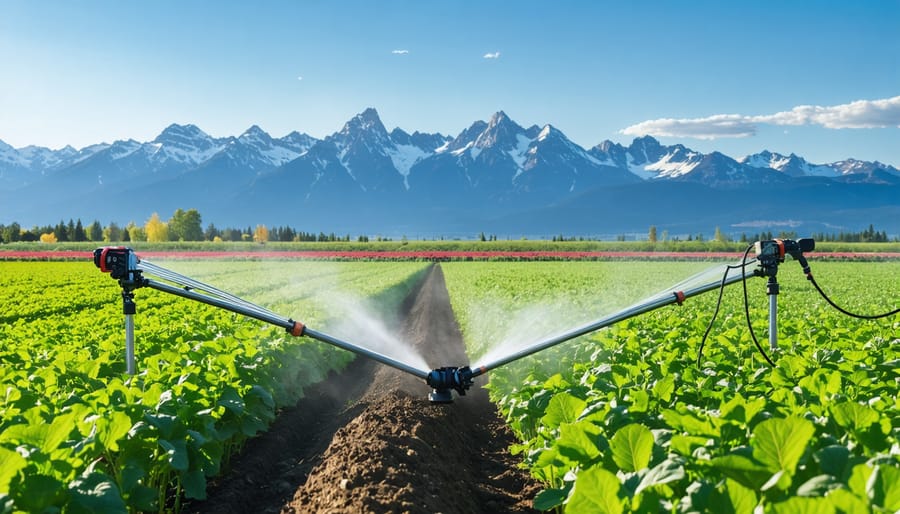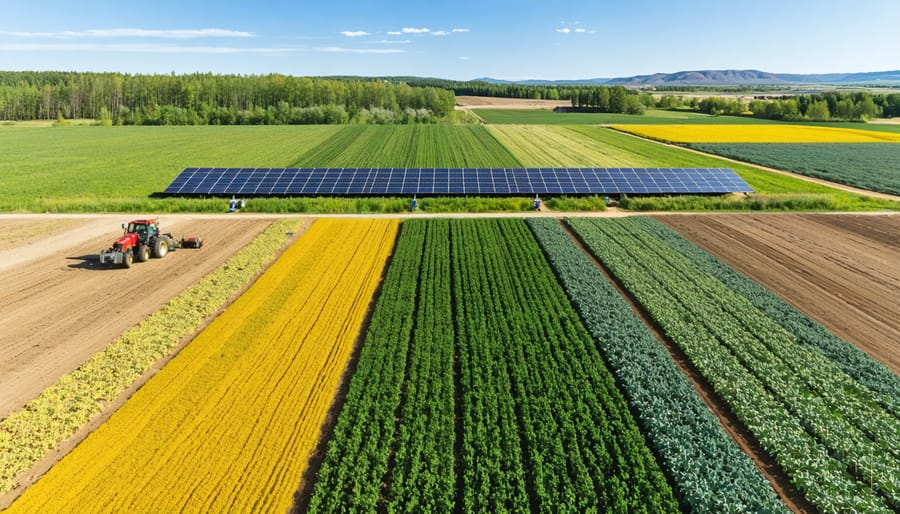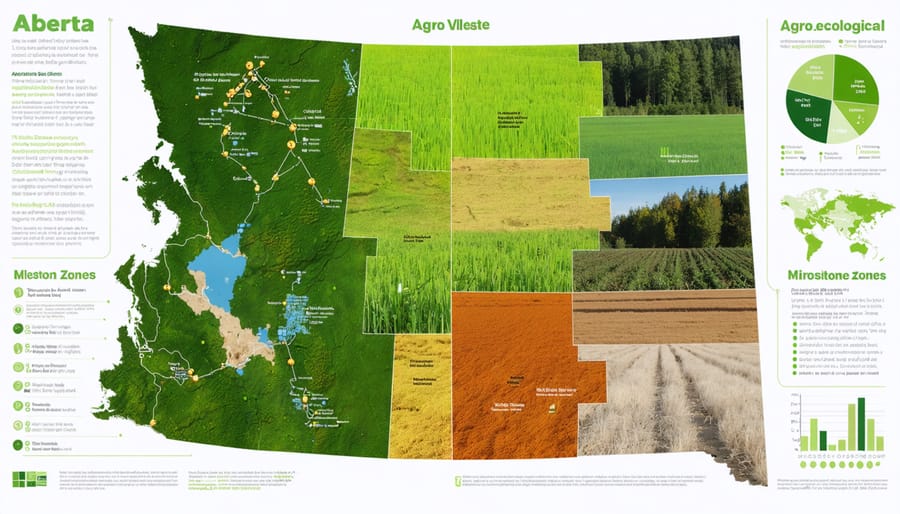As Alberta’s climate patterns shift, organic agriculture emerges as a vital strategy for both climate resilience and agricultural sustainability. Research from the Rodale Institute demonstrates that organic farming methods can sequester up to 40% more carbon than conventional practices, while simultaneously building soil health and water retention capacity.
Canadian farmers are uniquely positioned to lead this agricultural transformation. Our extensive grasslands and diverse growing regions provide ideal conditions for organic farming practices that naturally enhance carbon sequestration. From Peace River to Medicine Hat, innovative farmers are already implementing regenerative techniques that reduce greenhouse gas emissions while improving crop yields and soil fertility.
The intersection of organic agriculture and climate change presents both challenges and opportunities for Alberta’s farming community. By adopting practices like cover cropping, reduced tillage, and integrated livestock management, local producers are building resilient food systems that can withstand extreme weather events while contributing to climate change mitigation.
This shift towards organic methods isn’t just about environmental stewardship – it’s about creating economically viable farming operations that can thrive in an uncertain climate future. With growing consumer demand for organic products and increasing carbon credit opportunities, the timing has never been better for Canadian farmers to explore organic transitions.

Organic Agriculture: Your Farm’s Climate Shield
Carbon Storage Champions: Organic Soil Practices
In Alberta’s agricultural landscape, implementing effective organic soil management techniques has become a powerful tool in our fight against climate change. These practices not only improve soil health but also significantly increase carbon storage capacity.
Cover cropping has emerged as a leading method among Alberta farmers, with species like clover and rye grass working double-duty to protect soil and capture carbon. Local farmers report that maintaining year-round soil coverage can sequester up to 2 tonnes of carbon per hectare annually.
Reduced tillage practices, when combined with organic methods, help maintain soil structure and prevent carbon loss. Many Alberta farmers have successfully adopted shallow tillage or no-till systems, using specialized equipment designed for organic operations. These approaches keep carbon locked in the soil while managing weeds effectively.
Composting and the application of organic amendments have shown remarkable results in building soil carbon. Prairie farmers using well-aged manure and compost report improved soil structure and increased organic matter levels, with some achieving a 2% increase in soil organic carbon over five years.
Crop rotation diversity plays a crucial role in carbon storage. Including deep-rooted perennials like alfalfa in rotation cycles helps transfer carbon deeper into the soil profile. Local success stories show that three-year rotations including perennials can increase soil carbon content by up to 15% compared to conventional systems.
These practices not only benefit the climate but also improve farm resilience through enhanced water retention and nutrient cycling. Many Alberta organic farmers have found that investing in soil health through these methods pays dividends in both environmental and economic terms.

Water-Smart Organic Methods
In Alberta’s increasingly unpredictable climate, water management has become crucial for farm sustainability. Organic agriculture offers several proven methods to enhance soil water retention and build resilience against both drought and flooding conditions.
The foundation of water-smart organic farming lies in building healthy soil structure through regular additions of organic matter. By incorporating composted manure and green manures, farmers can increase their soil’s water-holding capacity by up to 30%. This improvement means crops can better withstand dry spells while maintaining productive growth.
Cover cropping plays a dual role in water conservation. Deep-rooted cover crops like alfalfa and clover create channels in the soil that improve water infiltration, while their surface coverage reduces evaporation. Many Alberta farmers have successfully integrated drought-resistant crops into their rotation systems, achieving better yields even during challenging seasons.
Mulching with organic materials such as straw or leaf litter provides additional benefits. This practice not only conserves soil moisture but also regulates soil temperature and suppresses weed growth. Local farmers report using approximately 10 centimetres of organic mulch reduces irrigation needs by up to 25%.
Conservation tillage techniques, when combined with organic methods, further enhance water efficiency. Reducing tillage helps maintain soil structure and beneficial microorganisms while preventing moisture loss through soil disturbance. Many successful organic operations in southern Alberta have adopted modified minimum-till systems that work well within organic certification requirements.
These water-smart practices create a more resilient farming system that can better handle both moisture shortages and excess precipitation, essential for adapting to our changing climate patterns.
Real Results: Alberta Farmers Leading the Way
The Smith Family’s Soil Revolution
When Trevor and Sarah Smith inherited their family’s 800-hectare farm near Olds, Alberta in 2015, they faced declining soil health and rising input costs. “We knew something had to change,” recalls Trevor. “Our soil tests showed decreasing organic matter, and our crop yields were becoming more vulnerable to extreme weather.”
The Smiths began their organic transition by first converting 160 hectares to test different methods. They implemented a diverse crop rotation including legumes, started composting their livestock manure, and adopted reduced tillage practices. Within three years, soil organic matter increased from 2.8% to 4.2%, and their fields showed improved water retention during dry spells.
“The change wasn’t just about certification,” Sarah explains. “We wanted to build resilience into our operation while doing our part for climate change.” Their organic practices now sequester an estimated 2.5 tonnes of carbon per hectare annually, while reducing their farm’s greenhouse gas emissions by eliminating synthetic fertilizers.
Today, the entire Smith farm is certified organic, producing wheat, oats, and yellow peas. Their success has inspired neighbouring farms, with five other local operations beginning their own organic transitions. “The best part,” Trevor shares, “is seeing life return to our soil. The earthworms are back, and our land feels more alive than ever.”

Community Success: The Red Deer Valley Initiative
In the heart of Alberta’s Red Deer Valley, a remarkable transformation has taken place over the past five years. Local farmers Sarah McKenzie and Tom Peterson initiated a collaborative organic farming project that has since grown to include 15 farms covering 2,000 hectares of land. The initiative began as a response to increasing drought conditions and soil degradation in the region.
The participating farms transitioned to organic practices gradually, implementing cover cropping, crop rotation, and reduced tillage methods. They established a knowledge-sharing network where experienced organic farmers mentored those new to the practice. This community-based approach helped reduce the learning curve and minimize transition risks.
The results have been impressive. Soil organic matter has increased by an average of 2% across participating farms, leading to better water retention and reduced irrigation needs. Carbon sequestration estimates suggest the initiative is now capturing approximately 2,000 tonnes of CO2 equivalent annually. Crop resilience has improved significantly, with participating farms reporting 30% less crop damage during extreme weather events compared to conventional farms in the area.
The initiative has also created a local organic grain processing facility, reducing transportation emissions and creating additional revenue streams for participating farmers. The success has inspired neighboring communities, with three similar projects now launching in central Alberta. The Red Deer Valley Initiative demonstrates how community-driven organic farming can create both environmental and economic benefits while building climate resilience.
Start Your Organic Climate Journey
First Steps: Simple Organic Changes
Starting your organic journey doesn’t require a complete farm overhaul. By implementing simple, strategic changes, you can begin reaping the benefits of climate-smart farming practices while building soil health and resilience.
Begin with cover cropping between seasons using locally-adapted varieties like fall rye or red clover. These plants naturally enhance soil structure and capture carbon while protecting your fields from erosion. Start small with a 2-hectare test plot to gain confidence and experience.
Reduce tillage intensity by adopting minimal-till practices where possible. Many Alberta farmers have successfully transitioned by first implementing this approach on their lighter soils, gradually expanding as they refine their techniques.
Incorporate organic matter through composting crop residues and animal manure. Even modest applications of 5 tonnes per hectare can significantly improve soil health. Start your own compost pile using readily available farm materials.
These initial steps require minimal investment while providing immediate environmental benefits and helping you develop the skills needed for broader organic adoption.
Community Resources and Support
Alberta’s organic farming community offers numerous resources to support your transition to climate-smart agriculture. The Organic Alberta Association provides mentorship programs connecting experienced organic farmers with those starting their journey. Their regular workshops and field days offer hands-on learning opportunities across the province.
For funding support, the Canadian Agricultural Partnership (CAP) offers grants specifically for organic certification and sustainable farming practices. The Environmental Farm Plan program provides additional financial assistance for implementing climate-friendly improvements on your farm.
Local agricultural extension offices throughout Alberta offer free consultations and soil testing services. The Prairie Organic Development Fund supports research and education initiatives, while the Organic Science Cluster facilitates knowledge sharing between farmers and researchers.
Connect with fellow organic farmers through regional farming associations and online communities. The Young Agrarians Alberta network specifically supports new farmers with land access programs and business planning resources. Many local conservation authorities also provide guidance on water management and soil conservation techniques tailored to your specific region.
Remember to reach out to your nearest agriculture service board for region-specific support and funding opportunities.
As we embrace organic agriculture in our fight against climate change, remember that success comes through community collaboration and shared knowledge. Here in Alberta, our farming communities have shown remarkable resilience and innovation in adapting sustainable practices. The long-term benefits extend beyond environmental protection – from improved soil health and biodiversity to stronger local food systems and economic stability. By supporting one another, sharing experiences, and working with local agricultural organizations, we can build a more resilient and sustainable future for Canadian agriculture. Together, we’re not just preserving our farmland; we’re creating a legacy of environmental stewardship that will benefit generations to come. Every step toward organic farming practices is a step toward climate resilience, and our collective efforts make these changes possible and lasting.










